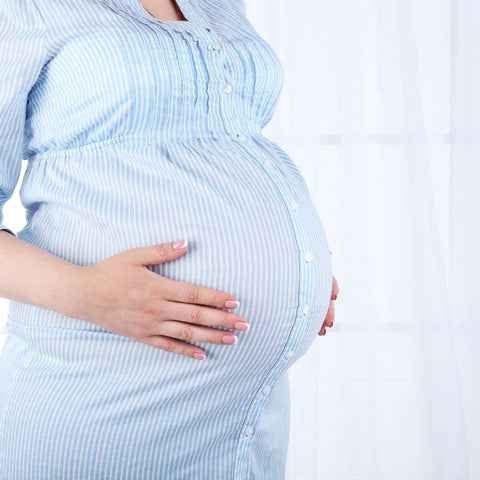For every expectant mother, the moment when she feels her baby's gentle movements for the first time is an unforgettable experience. These first gentle movements are not only a sign of the baby's healthy growth, but also promote the emotional connection between mother and child.
The time at which these first movements can be felt varies greatly from woman to woman. One reason for this is the varying sensitivity of the uterine muscles. First-time mothers in particular can often feel the baby's first gentle pushes between the 20th and 24th week of pregnancy.
Various factors influence how well and intensely these movements can be felt:
-
The position of the placenta plays a major role. With an anterior placenta, for example, it can be more difficult to feel the kicks.
-
The position of the baby also has an influence. If the baby's feet and hands are pointing towards the abdominal wall, movements can be felt more clearly.
-
The amount of amniotic fluid also has an effect. If the volume of amniotic fluid is higher, the movements may be weaker.
Changing table MOKU
For unforgettable moments with your child
Interestingly, the baby starts to move as early as the 6th week of pregnancy. However, these early movements are so delicate that they cannot be felt at this early stage, as the embryo is still very small at this point.
3. anterior placenta - when pregnant women perceive the baby's movements later:
If the egg nests in the uterus on the so-called anterior wall, i.e. where the anterior wall placenta is located, you may perceive your baby's movements later and less intensively. This is due to the specific positioning, which means that the movements are softer and less noticeable - as if they were muffled. Nevertheless, this position of the placenta is completely harmless for the baby's development. A helpful hint: The exact position of the placenta can be found in your maternity record, specifically on page 10 under the heading Placental localization/structure. If you have any questions or uncertainties, your gynecologist will be happy to help you.

4 Your child's first movements: What happens in the womb
The perception of your baby's first movements in the womb is unique for every pregnant woman. Initially, no distinct jolts or strong movements are felt. Many expectant mothers compare these first tender signs to the feeling of a gentle gurgle, a soft bubbling or the bursting of tiny soap bubbles, similar to the light flapping of a butterfly's wings. You may even feel as if your baby is gently tickling you. Over time, as the baby's arms and legs develop, these movements will become more pronounced until eventually the head can also be moved.
Just before you give birth, your baby may increase its activity to the point where your belly is visibly bulging and moving, which even the father can easily feel.
As long as there is enough space in the womb, your baby will turn and stretch regularly. However, as the baby grows and increases in size, the available space becomes narrower. Extensive stretching is then hardly possible. Instead, the baby shows its presence by kicking its arms or legs, which is often the case from the 30th week of pregnancy.

EverMat crawling mat
Extra skin-friendly - vegan leather
5. baby movements: Intensity & frequency
In the first 20 weeks of pregnancy, many women do not yet feel their unborn baby moving. But from the second trimester onwards, the baby really gets going in the womb - it stretches and turns, which are very moving moments for the mother-to-be. The gentle to strong kicks can be interpreted as loving messages from the little creature. In the third trimester, activity usually decreases as the space in the womb becomes narrower. In addition, babies spend up to 20 hours a day sleeping and are therefore less active.
Specialists such as midwives and gynecologists advise not to become too fixated on the intensity of the baby's movements. It can be challenging not to be concerned, especially if the baby's movements are less or different than expected. If you notice a significant decrease in movements or they stop altogether, it is advisable to seek medical advice.
Occasionally, the baby's movements may also be perceived as uncomfortable, which is related to the direction of pushing and a decrease in the amount of amniotic fluid.

6 Initiating baby movements
It often only takes simple measures to motivate your baby to move. Try speaking to your baby with your gentle voice or singing a song to him - this often works wonders. Gently stroking your tummy can also stimulate your baby's movements. The baby can also be activated by your eating and drinking habits, as bowel sounds often wake him up.
By adjusting your position, whether sitting or lying down, you can also provoke movements.
Interestingly, your baby senses your emotional states. It could be that it reacts to your stress with gentle bumps.

Changing mat MICRO




























